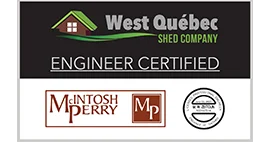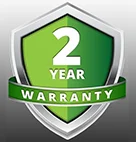Everything You Need to Know About Permits for Tiny Homes in Quebec
Tiny homes have captured the imagination of homeowners across Quebec. With their charming designs, affordable price tags, and eco-friendly appeal, it’s no wonder so many are considering downsizing to one of these unique dwellings.
But before you can settle into your new tiny home, there’s one crucial step you can’t skip: getting the right permits.
Because even though tiny homes are small, they’re still subject to building codes, zoning laws, and municipal regulations in Quebec.
This guide will walk you through everything you need to know about obtaining a permit for a tiny home in Quebec — from understanding the rules to tips for a smooth approval process.



Why Do You Need a Permit for a Tiny Home?
Many people assume that because tiny homes are small — often under 500 square feet — they don’t require permits. Unfortunately, that’s not true.
In Quebec, any structure intended for human habitation, whether permanent or seasonal, typically requires approval by your municipality’s urban planning department.
Here are the main reasons:
✅ Ensuring your home meets safety and construction standards outlined in the Quebec Construction Code.
📏 Complying with zoning bylaws, such as minimum lot sizes, setbacks, and density limits.
💧 Verifying the structure’s impact on public services, like water, sewage, and electricity.
🏡 Protecting the value of surrounding properties by maintaining a consistent aesthetic and function within the neighbourhood.
Without a permit, you could face fines, a stop-work order, or even an order to remove your tiny home entirely.
Tiny Homes on Wheels vs. Tiny Homes on a Pad
A tiny home on wheels is sometimes treated like a recreational vehicle (RV) under Quebec law.
🚐 Pros: Mobility, flexibility, and potential exemption from some permanent dwelling requirements.
🚫 Cons: Many municipalities do not allow permanent, year-round living in RVs, and you may be restricted to seasonal use.
Tiny Home on a Pad
This type is treated as a permanent structure — like any other house — and must fully comply with building codes and zoning bylaws.
✅ Pros: Easier to meet municipal requirements for year-round living, better insulation, and resale value.
📄 Cons: Requires a permanent lot and more paperwork.
If you’re unsure which category your home falls under, ask your municipality before starting the application process.
Step-by-Step Guide to Getting a Permit
Now that you know why permits are important and how tiny homes are categorized, here are the steps to follow:
1️⃣ Check Your Municipality’s Zoning Regulations
Your first step is to contact the urban planning department (Service de l’urbanisme) at your municipality. Each city, town, and village in Quebec sets its own zoning bylaws, which dictate:
✅Whether tiny homes are allowed in your area.
✅The minimum and maximum lot sizes.
✅The required distance (setbacks) from property lines.
✅Rules about primary vs. secondary dwellings.
✅Restrictions on seasonal vs. permanent occupancy.
Some municipalities have specific rules about minimum square footage, which may make it harder for some tiny homes to qualify.
If tiny homes are not explicitly mentioned in your bylaws, you may need to advocate for your project, apply for a variance, or explore nearby municipalities with more flexible policies.
2️⃣ Prepare Detailed Plans
Once you know that your lot is zoned for a tiny home, the next step is to prepare a complete set of plans for your building.
These usually include:
✅Floor plans, showing room layout, doors, windows, and dimensions.
✅Elevation drawings, showing the height and exterior appearance.
✅Details about materials, insulation, and structural components.
✅Foundation or anchoring plan (even for wheeled homes, some municipalities require anchoring).
✅Utility connection plan for water, electricity, and sewage/septic.
If you’re working with a builder like West Quebec Shed Company, we can help you create these plans and make sure they meet municipal requirements.
3️⃣ Submit Your Application
With your plans ready, you can submit your application to your municipality.
You’ll typically need:
✅The completed application form.
✅Proof of property ownership or written permission from the owner if you’re renting.
✅Your building plans.
✅Proof of compliance with zoning bylaws.
✅Payment of the application fee (varies by municipality).
Most applications can be submitted in person, and some municipalities now accept online submissions.
4️⃣ Wait for Approval
The municipal team will review your application to ensure it meets all requirements. This review process can take anywhere from a few days to several weeks, depending on the complexity of your project and the municipality’s workload.
If there are any issues, the municipality may ask you to revise your plans or provide additional information before granting approval.
5️⃣ Schedule Inspections
Once construction begins, you may need to schedule inspections at certain stages, such as:
✅Pad installation.
✅Framing.
✅Final inspection before occupancy.
These inspections ensure your tiny home complies with Quebec’s Construction Code and any local requirements.



Common Challenges (and How to Overcome Them)
While the process is fairly straightforward, there are some common challenges you may face:
Zoning Restrictions
Some municipalities still don’t have provisions for tiny homes.
✅ Solution: Look for lots in municipalities known to welcome tiny homes, or apply for a minor variance.
Minimum Size Requirements
Some bylaws require a minimum square footage that exceeds what tiny homes typically offer.
✅ Solution: Consider increasing the footprint slightly to meet requirements, or apply for an exception.
Seasonal vs. Permanent Occupancy
Many areas only allow tiny homes as seasonal dwellings.
✅ Solution: Clarify your intent with the municipality and choose a lot zoned for full-time use.
Utility Hookups
Hooking up to municipal water and sewage may be tricky in rural areas.
✅ Solution: Explore off-grid options like composting toilets and rainwater collection, but confirm that these are allowed.
Tips for a Smooth Permit Process
✅ Start early — begin speaking with your municipality before buying a lot or building.
✅ Work with a professional builder — a company familiar with Quebec’s codes (like West Quebec Shed Company) can save you time and stress.
✅ Be flexible — you may need to adjust your design to meet local regulations.
✅ Document everything — keep copies of all communications, approvals, and inspections.
✅ Stay patient — municipal processes can take longer than expected.
Frequently Asked Questions
Do I need a permit if my tiny home is on wheels?
In most municipalities, yes — especially if you plan to live in it year-round. Even though it’s mobile, it still counts as a dwelling.
How much does a permit cost?
Permit fees vary by municipality and project size, but expect anywhere from $100 to $1,000+.
Can I put a tiny home in my backyard?
If local zoning allows for secondary or accessory dwellings, you may be able to put a tiny home in your yard — but you still need a permit.
What if my tiny home is off-grid?
You’ll still need to show how it meets health and safety standards. Some municipalities are open to off-grid solutions, while others are stricter.
Why Work With West Quebec Shed Company?
Navigating permits can be complicated — but we make it easier. At West Quebec Shed Company, we not only build high-quality, handcrafted tiny homes, but we also help our clients through the permit process.
Here’s how we help:
👉Providing detailed, compliant building plans.
👉Advising you on suitable lot choices.
👉Making sure your design meets local bylaws.
👉Supporting you with any revisions the municipality requests.
Our goal is to help you move into your dream tiny home — stress-free and fully approved.
Ready to Get Started?
If you’re ready to take the next step toward your tiny home, we’re here to help. Whether you already have a lot or you’re just starting your search, we’ll guide you through every stage — from design to permits to delivery.
👉 Contact us today to schedule a consultation. Let’s bring your tiny home vision to life, the right way.






